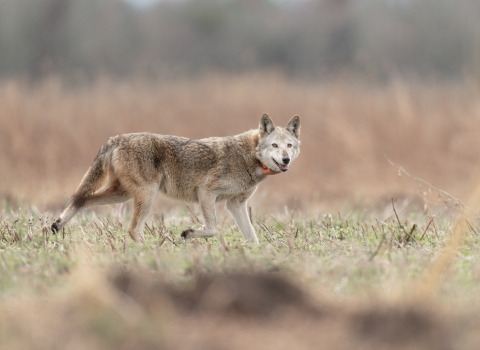Bird enthusiasts from around the world travel to northern Michigan in hopes of catching sight of a Kirtland's warbler, a small songbird once poised on the brink of extinction. Now the species is thriving thanks to decades of effort by a diverse group of dedicated partners. Due to the species' remarkable recovery, the U.S. Fish and Wildlife Service today announced that it no longer warrants protection under the Endangered Species Act (ESA).
“The effort to recover the Kirtland's warbler is a shining example of what it takes to save imperiled species,” said Margaret Everson, Principal Deputy Director of the Service. “Truly dedicated partners have worked together for decades to recover this songbird. I thank them for their efforts and applaud this historic conservation success.”
“The Kirtland's warbler was one of the first species in the United States to be put on the federal list of endangered and threatened species, and today's action by the U.S. Department of the Interior marks the latest chapter in a remarkable wildlife success story,” said Michigan Department of Natural Resources Director Dan Eichinger. “The bird's recovery provides dramatic testimony to what conservation organizations, governments and businesses can accomplish when they come together for the good of the resource. We are grateful for the partnership of U.S. Fish and Wildlife Service and U.S. Forest Service in this effort. I sincerely believe conservation is a team sport, and today's announcement is a big win for natural resources in Michigan and for all those involved.”
Historically, wildfires were the most important factor for establishing the natural jack pine forests that Kirtland's warblers need for breeding habitat. Modern wildfire suppression greatly diminished the natural disturbance that once generated Kirtland's warbler breeding habitat. In the absence of wildfire, land managers had to take an active role in mimicking natural processes that regularly occurred within the jack pine ecosystem. This is primarily done through large-scale timber harvesting and human-assisted reforestation.
Today, the sale of jack pine timber on sites where reforestation will occur is critical to managing Kirtland's warbler breeding habitat. Timber receipts offset the cost of replanting jack pine needed to support a viable population of nesting Kirtland's warblers that would not otherwise be feasible through conservation dollars.
“Private forest owners are proud partners in this major milestone and committed to the long-term health of the Kirtland's warbler,” said Dave Tenny, founding President and CEO of the National Alliance of Forest Owners. “Private forest owners are an essential part of conservation success – 360 million acres of working forests across the country are privately owned. We proudly work with the U.S. Fish & Wildlife Service and conservation partners to develop and implement smart management decisions that support a wide range of wildlife across the country.”
"Collaborative conservation is an effective way of protecting at-risk species and their habitat because it creates a common focus around a shared objective for government agencies, private landowners and the broader conservation community," said Craig Seaman, Senior Investment Forester, of Timberland Investment Resources, LLC, which manages working forest investments in Wisconsin. "This is another example of how conservation without conflict can produce positive outcomes and we congratulate all those involved, and especially the U.S. Fish and Wildlife Service for leading the effort."
Kirtland's warblers were among the first animals in the United States identified as being at risk of extinction. The species nests only in young jack pine stands in Michigan, Wisconsin and Ontario. It overwinters in The Bahamas. Populations dipped to a low of 167 pairs in 1974 and again in 1987 before starting a steady climb toward recovery.
Prompting the warbler's slow but steady ascent were long-term efforts by partners such as the Michigan Department of Natural Resources, U.S. Forest Service and conservation groups to conserve young jack pine habitat and control brown-headed cowbirds, a primary threat to the species. Cowbirds lay their eggs in warbler nests and larger cowbird chicks outcompete their warbler nest mates, causing the warbler chicks to die while the unwitting warbler parents raise the cowbird imposters.
Year after year, a stalwart group of partners ensured habitat was available and cowbirds were controlled. Due to their efforts, the Kirtland's warbler population steadily rose. Numbers reached more than 1,000 pairs by 2001, expanding beyond the northern Lower Peninsula to areas in Michigan's Upper Peninsula, Wisconsin and Ontario. Currently, the Kirtland's warbler population is estimated to be around 2,000 pairs, double the goal identified in the species' recovery plan. The population has exceeded recovery goals for the past 17 years and continues to increase and expand its range.
The Kirtland's Warbler Breeding Range Conservation Plan was developed in 2015 and is now the guiding management strategy for the species. Additionally, funding and other commitments to habitat management and cowbird control are in place to ensure continued conservation actions in the absence of ESA protections.



